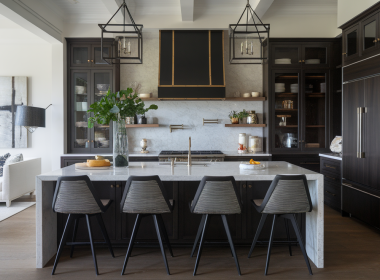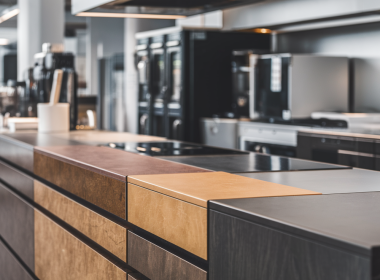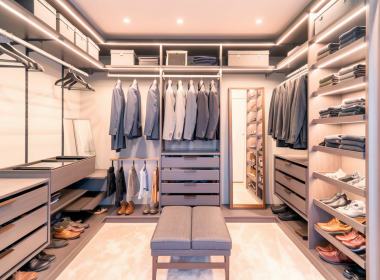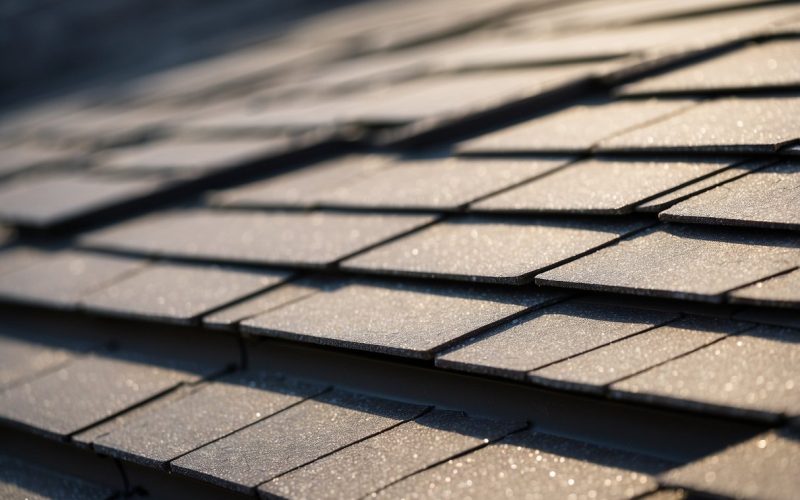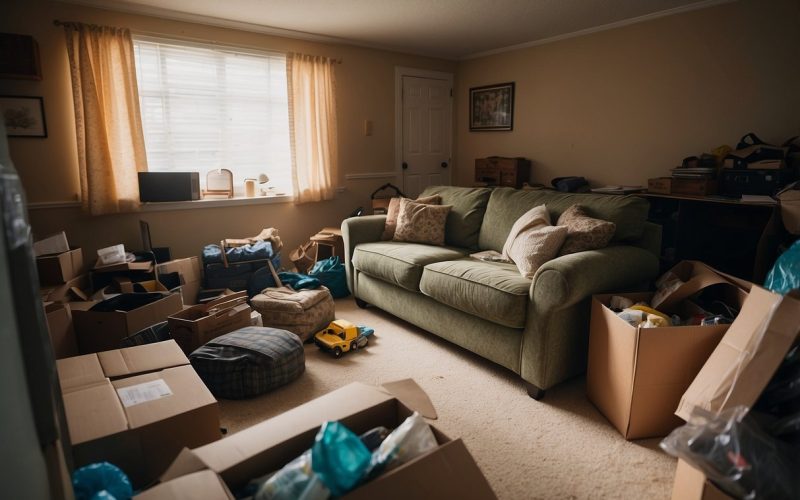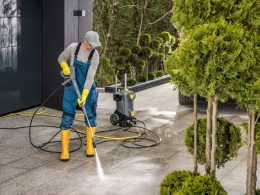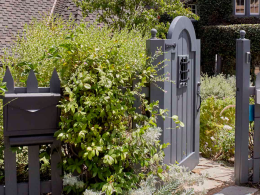Choosing a roof for your new home is a big decision. Two popular options are flat roofs and shingles. Each type has its pros and cons. Your decision needs to be made based on a number of variables, which we will cover in this article.
Flat roofs cost less to install and maintain than shingle roofs. They also give homes a modern look. But they can leak more easily if not built well.
Shingle roofs are common in many houses. They come in many colors and styles. Shingles last a long time and protect well against rain and snow. But they cost more than flat roofs and need more upkeep over time.
Essential Differences Between Flat Roof and Shingle Roof
Flat roofs vs shingle roofs differ in design, materials, and aesthetics. These factors impact their suitability for different buildings and climates.
Overview of Roof Types
Flat roofs have a slight slope to allow water drainage. They’re common in commercial buildings and some modern homes. Shingle roofs have a steeper pitch. They’re the most popular choice for residential homes in North America.
Flat roofs need regular upkeep to prevent water pooling. Shingle roofs shed water more easily due to their slope. This can mean less maintenance.
The lifespan of flat roofs is often shorter than shingle roofs. Flat roofs typically last 10-20 years. Shingle roofs can last 20-30 years or more with proper care.
Materials Used in Flat Roofing and Shingle Roofing
Flat roofs use membranes like EPDM, TPO, or built-up roofing (BUR). These materials create a waterproof layer. They can be single-ply or multi-ply systems.
Shingle roofs mainly use asphalt shingles. Other options include wood, slate, or metal. Asphalt shingles are popular due to their low cost and easy install.
|
Roof Type |
Common Materials |
|---|---|
|
Flat |
EPDM, TPO, BUR |
|
Shingle |
Asphalt, Wood, Slate |
Flat roof materials are often more durable against foot traffic. This makes them better for rooftop equipment access. Shingles can crack under repeated foot traffic.
Design and Aesthetic Considerations
Flat roofs create a modern, sleek look. They’re great for urban settings and contemporary architecture. Flat roofs also allow for rooftop gardens or living spaces.
Shingle roofs offer a classic, traditional appearance. They come in many colors and styles. This gives homeowners more options to match their home’s look.
Flat roofs can be more energy-efficient. They provide space for solar panels or white reflective coatings. These features can lower cooling costs in hot climates.
Shingle roofs add depth and texture to a home’s exterior. They can boost curb appeal and resale value in many neighborhoods. The pitch of shingle roofs also allows for attic spaces or vaulted ceilings inside.
Installation and Construction

Flat roofs and shingle roofs have different installation processes. Each type needs specific skills and materials. The choice between them affects construction time and costs.
Flat Roof Installation Process
Flat roof installation starts with a strong base. Roofers lay down insulation boards. They cover these with a waterproof membrane. This membrane can be made of rubber, PVC, or modified bitumen.
Roofers attach the membrane using adhesives or heat welding. They pay extra attention to seams and edges. Proper sealing is key to prevent leaks.
Flat roofs need a slight slope for drainage. Roofers create this slope with tapered insulation or by adjusting the roof structure.
Shingle Roof Installation Process
Shingle roof installation begins with a layer of underlayment. This protects the roof deck from water. Roofers then add metal drip edges along the roof’s edges.
Next, they lay shingles in overlapping rows from bottom to top. Each shingle is nailed in place. Proper nail placement is crucial for a secure roof.
Roofers cut shingles to fit around vents and chimneys. They install special shingles at the roof’s peak for a finished look.
Roofing Contractors and Expertise
Roofing contractors need different skills for flat and shingle roofs. Flat roof experts must know how to work with large membranes. They should be skilled in heat welding and adhesive application.
Shingle roof installers need precision in aligning and nailing shingles. They must understand how to create proper overlaps for water protection.
Both types of roofers should know local building codes. They must ensure proper ventilation and insulation. Good contractors can advise on the best roofing choice for a building.
Cost Considerations
Choosing between flat roofs and shingles involves weighing several financial factors. The initial price, long-term value, and ongoing expenses all play key roles in the decision.
Initial Cost Analysis
Flat roofs often cost less to install than shingle roofs. The materials for flat roofs are usually cheaper, and the installation process is simpler. This can lead to lower labor costs.
Shingle roofs typically have a higher upfront price. The materials are more expensive, and the installation takes longer. This extra time means higher labor costs.
For a 1,500 square foot roof:
- Flat roof: $6,000 – $12,000
- Shingle roof: $8,000 – $16,000
These prices can vary based on location and specific materials used.
Long-Term Investment
Shingle roofs often last 20-30 years with proper care. This long life span can make them a good investment for homeowners who plan to stay in their house for many years.
Flat roofs usually have a shorter life span of 10-20 years. But they can be more energy-efficient, which may lead to lower heating and cooling costs over time.
Both types can add value to a home, but in different ways. Shingle roofs are seen as more traditional and may appeal to more buyers. Flat roofs can create usable outdoor space, which some buyers find attractive.
Maintenance and Repair Costs
Flat roofs need more regular maintenance to prevent water pooling and leaks. This can mean higher yearly costs for inspections and minor repairs.
Common flat roof maintenance tasks:
- Clearing debris
- Checking for cracks or blisters
- Reapplying coatings every few years
Shingle roofs need less frequent maintenance but can be more expensive to repair when problems do arise. Replacing damaged shingles or fixing leaks can be costly.
Typical shingle roof maintenance includes:
- Cleaning gutters
- Checking for loose or missing shingles
- Inspecting flashing around chimneys and vents
Both roof types benefit from regular inspections to catch small issues before they become big problems.
Durability and Maintenance Requirements

Flat roofs and shingle roofs have different lifespans and upkeep needs. Their durability affects how often repairs are needed and when replacement becomes necessary.
Comparing the Lifespan of Roofing Options
Shingle roofs typically last 20 to 30 years. Higher-quality shingles may extend this to 50 years. Flat roofs often have a shorter lifespan of 10 to 20 years.
Weather plays a big role in roof longevity. Harsh sun, heavy rain, and snow can wear roofs down faster. Shingles may crack or curl over time.
Flat roofs can develop leaks if water pools on the surface. This is less of an issue for sloped shingle roofs. Proper drainage is key for flat roof durability.
Maintaining Flat Roofs vs. Shingle Roofs
Flat roofs need more frequent checks and care. Owners should inspect them 2-3 times a year and after big storms. Look for cracks, bubbles, or separated seams.
Clearing debris and fixing small issues quickly helps prevent bigger problems. Resealing the roof every few years adds protection.
Shingle roofs require less hands-on maintenance. Annual checks are usually enough. Look for missing, loose, or damaged shingles. Clean gutters to prevent water backup.
Both roof types benefit from trimming nearby tree branches. This reduces debris and potential damage during storms.
Repair and Replacement Scenarios
Minor flat roof repairs often involve patching holes or resealing joints. More serious damage may require replacing sections of the roofing material.
For shingle roofs, individual shingles can be replaced as needed. Widespread damage might call for a full roof replacement.
Both roof types can suffer from severe weather events. Hail can crack shingles or dent flat roofs. High winds may tear off shingles or damage flat roof edges.
When repair costs start to add up, replacement becomes more cost-effective. This is especially true as roofs near the end of their expected lifespan.
Climate and Environmental Impact
Roof type affects how a home handles different weather and its impact on the environment. The choice between flat roofs and shingles can make a big difference in energy use and durability.
Effectiveness in Various Climates
Flat roofs work well in dry areas with little rain or snow. They can struggle in wet climates, as water may pool and cause leaks. Shingle roofs are better for places with lots of rain or snow. They let water and snow slide off easily.
In hot climates, flat roofs can get very warm. This may increase cooling costs. Shingle roofs reflect more sunlight, keeping homes cooler. But flat roofs can be covered with white coatings to reflect heat too.
Storms can damage both roof types. High winds may tear off shingles. Flat roofs can be punctured by falling branches. Good maintenance helps both types last longer in harsh weather.
Sustainable Roofing Practices
Flat roofs offer space for green roofs or solar panels. Green roofs have plants that absorb rainwater and cool the building. Solar panels on flat roofs can generate clean energy.
Shingle roofs can be made from recycled materials. Some are designed to be recycled at the end of their life. This cuts down on waste.
Both roof types can be made energy-efficient. Proper insulation is key. Light-colored roofing materials reflect heat and save energy. Some roofing products are made to last longer, reducing the need for replacements.
Water collection systems work well with both roof types. These systems catch rainwater for use in gardens or toilets. This saves water and helps the environment.
Technical Aspects
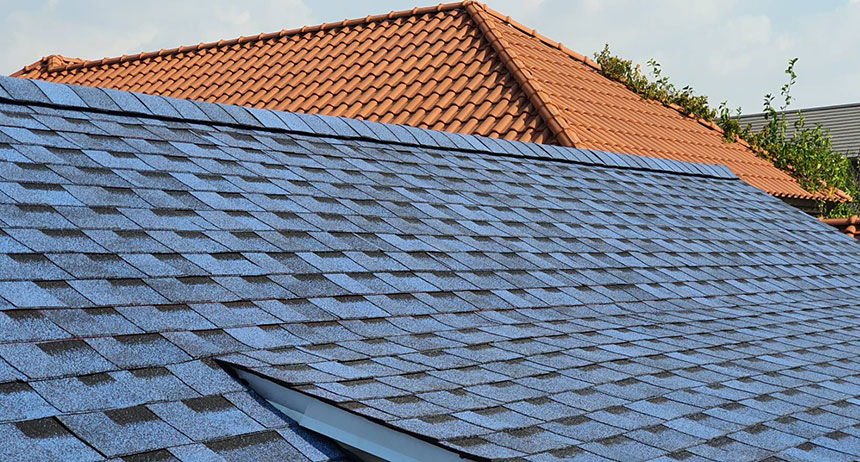
Flat roofs and shingles differ in several key technical areas that impact their performance and suitability for different buildings. These include how they handle water, the weight they add to structures, and their drainage capabilities.
Weatherproofing and Leakage Prevention
Flat roofs use large sheets of waterproof material to keep out rain and snow. These sheets are sealed at the edges to form a barrier. Common materials include rubber membranes and built-up roofing (BUR) with layers of felt and asphalt.
Shingles rely on overlapping to shed water. They’re installed from bottom to top, with each row covering the nails of the one below. This design helps water flow off the roof quickly.
Both types can develop leaks over time. Flat roofs may get cracks or holes in the membrane. Shingles can curl, break, or blow off in strong winds. Regular inspections help catch problems early.
Weight and Load Considerations
Flat roofs are often heavier than shingle roofs. They may use gravel or stones as ballast to hold down the roofing material. This extra weight can be 10-20 pounds per square foot.
Shingle roofs are typically lighter. Basic asphalt shingles weigh about 2-4 pounds per square foot. This makes them suitable for a wider range of building structures.
The weight difference affects building design. Structures with flat roofs need stronger support systems. This can increase construction costs.
Drainage and Slope Factors
Flat roofs aren’t truly flat. They have a slight slope, usually 1/4 inch per foot, to guide water to drains. These roofs need proper drainage systems to prevent water pooling.
Shingle roofs have steeper slopes, often 4-6 inches per foot or more. This helps water run off quickly. The steep angle also helps shed snow and debris.
Drainage issues can lead to leaks and damage over time. Flat roofs may need extra attention to keep drains clear. Shingle roofs can handle more rain and snow without special systems.
Pros and Cons
Flat roofs and shingle roofs each have their own set of advantages and disadvantages. These factors can impact cost, durability, and maintenance needs.
Benefits of Flat Roofs
Flat roofs are popular for commercial buildings. They cost less to install than pitched roofs. The materials used, like EPDM rubber or modified bitumen, are affordable. Flat roofs also create usable space on top of a building. This area can house HVAC units or serve as a rooftop patio.
Flat roofs are easier to inspect and maintain. Roofing contractors can walk on them safely to check for issues. They also work well in areas with little rainfall.
Some flat roof materials, like TPO, reflect sunlight. This can help lower cooling costs in hot climates. Flat roofs are also more wind-resistant than pitched roofs.
Drawbacks of Flat Roofs
Flat roofs can have drainage problems. Standing water can lead to leaks and damage. They may need more frequent repairs than sloped roofs.
The lifespan of a flat roof is often shorter than that of shingle roofs. Most last 10-20 years, while shingles can last 30 years or more.
Flat roofs can be prone to punctures from fallen branches or foot traffic. Some materials, like torch-down roofing, pose a fire risk during installation.
In snowy areas, flat roofs may need extra support to handle heavy snow loads. They also don’t offer the same aesthetic appeal as pitched roofs for many homeowners.
Benefits of Shingle Roofs
Shingle roofs are a popular choice for homes. They come in many colors and styles to match different house designs. Asphalt shingles are affordable and easy to install.
Shingles have good water resistance. Their overlapping design helps water flow off the roof. This reduces the risk of leaks and water damage.
Most shingle roofs last 20-30 years with proper care. Some premium shingles can even last up to 50 years. They handle temperature changes well and resist fire.
Shingles are easy to repair. If a few shingles get damaged, roofers can replace them without redoing the whole roof. This can save money on maintenance over time.
Drawbacks of Shingle Roofs
Shingle roofs can be damaged by high winds. Strong storms may tear off shingles, leaving the roof vulnerable. They also don’t work well on low-slope roofs.
Dark shingles can absorb heat, making attics warmer in summer. This might increase cooling costs. Shingles are also not as environmentally friendly as some flat roof materials.
Installing shingles on complex roof shapes can be tricky. This may increase labor costs. Shingles are also heavier than some flat roof materials, which can stress the building structure.
In very hot climates, shingles may curl or crack over time. This can shorten their lifespan and require more frequent replacements.
Safety and Compliance
Flat roofs and shingles have different safety features and must meet specific building codes. Both options require proper installation and maintenance to ensure long-term safety.
Fire Resistance Ratings
Flat roofs often use materials like EPDM rubber or TPO that have good fire resistance. These materials can slow the spread of flames. Many flat roof systems have Class A fire ratings, the highest level.
Shingles also offer fire protection. Asphalt shingles typically have Class A or B fire ratings. Some fiberglass-based shingles perform better in fires than organic shingles.
Building codes may require certain fire ratings based on the area. Homeowners should check local rules when choosing roofing.
Both roof types need regular checks for damage that could increase fire risk. Keeping gutters clean and fixing holes quickly helps maintain safety.
Innovations and Future Trends
New roofing materials and green technologies are changing the game for both flat roofs and shingles. These advances aim to make roofs more durable, energy-efficient, and eco-friendly.
New Roofing Material Developments
Solar shingles are gaining popularity. They look like regular shingles but generate electricity. This innovation works for both flat and sloped roofs.
Cool roofing materials reflect more sunlight and absorb less heat. These help lower cooling costs in hot climates. They come in both flat and shingle options.
Recycled roofing materials are on the rise. Some new shingles use plastic and rubber from old tires. This cuts waste and can make roofs more durable.
Green roofs are a trend for flat roofs. They have a layer of plants that provide insulation and manage rainwater. This helps reduce energy use and urban heat.
Smart roofing systems are emerging. These use sensors to detect leaks or damage. They can alert homeowners before small issues become big problems.
Frequently Asked Questions
Flat roofs and shingled roofs have important differences in cost, durability, maintenance, and performance. Understanding these key factors can help homeowners choose the best roofing option for their needs.
What are the cost differences between flat roofs and shingled roofs?
Flat roofs typically cost less to install than shingled roofs. The materials for flat roofs are cheaper, and the installation process is simpler.
Shingled roofs have higher upfront costs due to more expensive materials and labor-intensive installation. But they often last longer, which can offset the initial price difference over time.
What are the pros and cons of choosing a flat roof over a shingled roof?
Flat roofs are easier to install and maintain. They provide extra usable space for rooftop gardens or solar panels. Flat roofs also work well in modern architectural designs.
On the flip side, flat roofs are more prone to leaks and water pooling. They may require more frequent repairs and have a shorter lifespan than shingled roofs.
How does the longevity of flat roofs compare to that of shingled roofs?
Shingled roofs usually last longer than flat roofs. A well-maintained shingled roof can last 20-30 years or more.
Flat roofs typically have a lifespan of 10-20 years. Their durability depends on the materials used and how well they’re maintained.
What are the maintenance considerations for flat roofs versus shingled roofs?
Flat roofs need regular inspections to check for ponding water, cracks, or tears in the membrane. They require prompt repairs to prevent leaks.
Shingled roofs need less frequent maintenance. Homeowners should check for loose or damaged shingles and clean gutters regularly.
Can flat roofs be more energy-efficient compared to shingled roofs?
Flat roofs can be more energy-efficient in certain climates. They’re easier to insulate and can reflect more sunlight when coated with light-colored materials.
Shingled roofs offer good insulation too. They allow for better attic ventilation, which can help regulate indoor temperatures.
What type of roofing is better suited for extreme weather conditions: flat or shingled?
Shingled roofs generally perform better in extreme weather. They’re more resistant to high winds and heavy rain. The sloped design helps shed water and snow more effectively.
Flat roofs can struggle with heavy snow loads and intense rainfall. They may need extra reinforcement in areas prone to severe weather.


